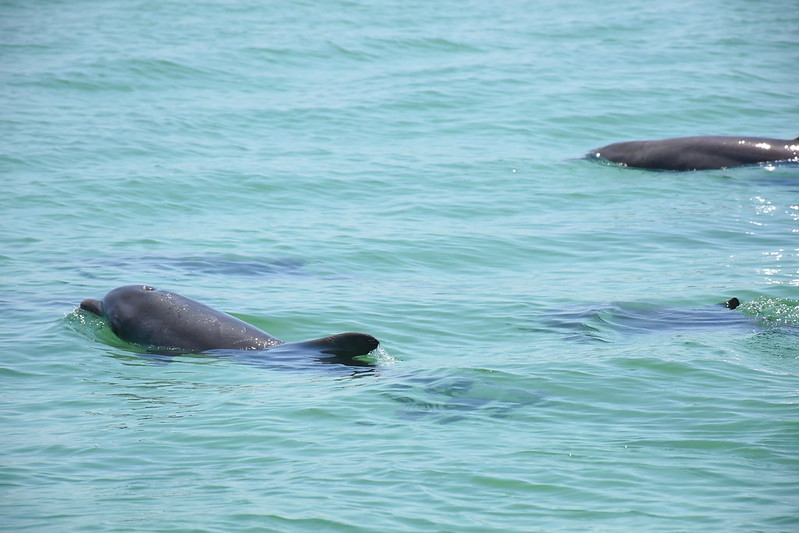
| Florida bottlenose dolphin. Credit: FWC photo by Bekah Nelson |
University of Florida researchers discovered the first case of a Florida bottlenose dolphin with the H5N1 avian influenza virus. The discovery has been published in Communications Biology.
UF’s Marine Animal Rescue team responded to a report of a distressed dolphin in Dixie County, Florida, which subsequently died.
| Distribution of Highly Pathogenic Avian Influenza H5 and H5N1 in North America. Credit: USGS |
Analyses of post-mortem samples initially performed at UF’s zoological medicine diagnostic laboratory ruled out the presence of other potential agents at play in the dolphin’s disease.
The Bronson Animal Disease Diagnostic Laboratory in Kissimmee, Florida, later verified the presence of HPAI virus in both the lung and brain.
Those results were confirmed by the National Veterinary Services Laboratory in Ames, Iowa, which characterized the virus subtype and pathotype.
The virus was confirmed to be HPAI A (H5N1) virus of HA clade 2.3.4.4b. Subsequent tissue analysis was performed at the Biosafety Level 3 enhanced laboratory at St. Jude Children’s Research Hospital in Memphis.
Allison Murawski, D.V.M., a former intern with UF’s aquatic animal medicine program, was first author on the study and developed a case report on the dolphin as part of her research project. She traveled to Memphis and worked closely with Richard Webby, Ph.D., who directs the World Health Organization Collaborating Center for Studies on the Ecology of Influenza in Animals and Birds at St. Jude’s and served as corresponding author on the paper
Webby’s laboratory investigates avian influenza cases in many species and was key in determining where the virus may have originated, what unique RNA characteristics or mutations were present that could suggest its ability to infect other mammals, and how the virus could be tracked from this source.
The researchers sequenced the genomes from local birds and looked at viruses isolated from Northeast seal populations.
“We still don’t know where the dolphin got the virus and more research needs to be done,” Webby said.
Copyright 2023-2025 FloridaWord.com